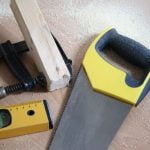Homeowners often turn to home equity loans as a means of financing various improvements or renovations on their properties. These loans utilize the equity built up in the home to provide funds for specific projects. However, a crucial consideration for lenders and borrowers alike is whether these loans are reportable under the Home Mortgage Disclosure Act (HMDA). In this article, we will explore the intricacies of HMDA reporting for home equity loans used specifically for home improvement purposes.
The HMDA is a federal law that requires certain financial institutions to report important data to regulatory agencies regarding their mortgage lending activities. Its aim is to promote transparency in lending practices and detect any discriminatory patterns or disparities in mortgage loan approvals. While home equity loans may not be considered traditional mortgages, some of them do fall within the scope of HMDA’s reporting requirements.
It is vital for lenders to understand HMDA reporting guidelines and ensure compliance when dealing with home equity loans. Failing to accurately report this information can result in penalties and damage an institution’s reputation. Therefore, by gaining a comprehensive understanding of how the HMDA applies to home equity loans, lenders can effectively navigate the reporting process while protecting their interests and remaining compliant with federal regulations.
What is HMDA and why is it important for lenders?
HMDA stands for the Home Mortgage Disclosure Act, which is a federal law that requires certain financial institutions to collect and report data on mortgage lending activities. The goal of HMDA is to promote fair lending practices and prevent discrimination in the mortgage lending process.
HMDA is important for lenders because it helps to ensure transparency and accountability in the mortgage market. By collecting and reporting data on their lending activities, lenders are able to identify any potential disparities or patterns of discrimination. This data can then be used by regulators, community organizations, and the public to monitor lending practices and address any issues that may arise.
For lenders, compliance with HMDA reporting requirements is not only a legal obligation but also a way to protect their reputation and maintain trust with borrowers and the community. Failing to comply with HMDA can result in penalties, fines, lawsuits, and damage to a lender’s public image.
Lenders should also keep in mind that HMDA reporting requirements have expanded in recent years. In addition to reporting data on traditional mortgages, lenders are now also required to report certain data related to home equity loans, including those taken out for home improvement projects. This means that lenders must carefully track and report information on these types of loans in order to ensure compliance with HMDA.
Overall, understanding HMDA and its importance for lenders is crucial for maintaining compliance with federal regulations and promoting fair lending practices. Lenders should stay up-to-date on any changes or updates to HMDA requirements and ensure that they have effective systems in place for collecting and reporting the necessary data. By doing so, lenders can demonstrate their commitment to fair lending practices while protecting themselves from potential legal issues.
Clarifying the concept of home equity loans for home improvement
A home equity loan is a type of loan that allows homeowners to borrow money using their home as collateral. This type of loan can be used for various purposes, including home improvement projects.
When it comes to HMDA reporting for home equity loans, it is important to understand the concept of home equity loans for home improvement. Homeowners often use their existing equity in their homes to finance renovations or upgrades.
This can be done through a traditional home equity loan, where the homeowner receives a lump sum of money and repays it over time with interest. Another option is a home equity line of credit (HELOC), which works like a credit card where the homeowner can borrow funds as needed up to a certain limit.
The purpose of clarifying the concept of home equity loans for home improvement in relation to HMDA reporting is to determine if these types of loans should be reported under HMDA regulations. The Home Mortgage Disclosure Act (HMDA) requires financial institutions to collect and report data on certain mortgage transactions to promote fair lending practices and prevent discriminatory lending practices.
So, is a home equity loan for home improvement HMDA reportable? The answer depends on several factors, including the purpose of the loan, the amount borrowed, and the characteristics of the borrower. If the loan meets specific criteria outlined by HMDA regulations, then it must be reported by lenders.
To determine if your home equity loan for home improvement is HMDA reportable, you need to consider factors such as whether your institution meets the threshold requirements for reporting under HMDA guidelines and whether your loan falls within one of the specified categories that require reporting.
HMDA reporting requirements for home equity loans
Types of home equity loans that are reportable
Firstly, it is essential to understand which types of home equity loans are subject to HMDA reporting. According to HMDA guidelines, all closed-end home equity loans that are secured by a borrower’s principal dwelling and used for home improvement purposes are reportable. On the other hand, open-end lines of credit such as HELOCs or credit cards tied to the borrower’s principal dwelling are not considered reportable under HMDA.
Reporting threshold and coverage
Another important aspect of HMDA reporting requirements for home equity loans is the coverage and threshold. Lenders must report all reportable home equity loans if they meet or exceed certain thresholds. For closed-end home equity loans, the institutional coverage threshold is met if a lender originates at least 100 covered transactions in the previous calendar year. However, depository institutions with assets below certain thresholds may be exempt from reporting.
Data points required for HMDA reporting
When it comes to actual reporting, lenders must collect and submit various data points related to home equity loans under HMDA regulations. These data points include information about the loan originator, property address, loan amount, interest rate, loan term, income and employment details of borrowers, action taken on the application (approved or denied), and reasons for denial if applicable.
Factors that determine if a home equity loan is HMDA reportable
When considering whether a home equity loan for home improvement is HMDA reportable, there are several factors that lenders need to take into account. These factors help determine whether the loan meets the criteria set forth by the Home Mortgage Disclosure Act (HMDA) for reporting purposes.
One important factor to consider is the purpose of the loan. According to HMDA regulations, loans that are primarily for business, commercial, or agricultural purposes are not considered reportable. However, if the purpose of the loan is mainly for home improvement or renovation, it may be subject to HMDA reporting requirements.
Another factor that determines if a home equity loan is HMDA reportable is the amount borrowed. Under current regulations, loans below a certain threshold are not required to be reported. The specific threshold varies each year based on inflation and is determined by the Consumer Financial Protection Bureau (CFPB). Lenders must ensure they stay updated on this threshold and adhere to any changes in order to accurately determine if their loan falls under the HMDA reporting requirement.
The location of the property being financed also plays a role in determining if a home equity loan is reportable under HMDA. For loans secured by properties located in metropolitan statistical areas (MSAs), lenders are generally required to report these loans regardless of whether they meet other criteria for reporting. It is essential for lenders to identify whether the property falls within an MSA and understand their obligations accordingly.
By carefully considering these factors, lenders can determine whether a home equity loan for home improvement projects needs to be reported under HMDA. It is crucial for lenders to accurately assess their loans in order to remain compliant with regulatory requirements and provide transparency in lending practices. Failure to comply with HMDA reporting can result in penalties and reputational damage for lenders, so it is vital to understand and adhere to these reporting obligations.
How to determine if your home equity loan for home improvement is HMDA reportable
Determining whether your home equity loan for home improvement is HMDA reportable is an important step in ensuring compliance with federal regulations. To determine if your loan falls under the reporting requirements of the Home Mortgage Disclosure Act (HMDA), there are several factors that you need to consider.
Loan Amount
One of the key factors in determining if a home equity loan for home improvement is HMDA reportable is the loan amount. According to HMDA regulations, loans that exceed certain thresholds are considered reportable. As of 2021, if the principal amount of your loan exceeds $27,200, it will generally be considered reportable under HMDA.
Property Location
Another factor to consider is the location of the property securing the loan. HMDA requires lenders to report on loans secured by properties located in metropolitan statistical areas (MSAs). If your property is located within an MSA, then your home equity loan for home improvement may be subject to HMDA reporting requirements.
Lender Coverage
In addition to loan amount and property location, it’s important to consider whether the lender is covered by HMDA. Not all lenders are required to comply with HMDA reporting requirements. Generally, lenders that originate at least 25 closed-end mortgage loans or at least 100 open-end lines of credit in each of the two preceding calendar years are subject to HMDA.
By considering these factors – loan amount, property location, and lender coverage – you can determine if your home equity loan for home improvement is HMDA reportable. It’s crucial to check these factors carefully and consult with legal or compliance professionals if needed to ensure accurate reporting and adherence to regulatory requirements.
In the next section, we will provide a step-by-step guide on how to navigate through the process of HMDA reporting for home equity loans to further assist you in ensuring compliance.
Step-by-step guide to HMDA reporting for home equity loans
A step-by-step guide to HMDA reporting for home equity loans is essential for lenders to ensure compliance with regulatory requirements. Here is a detailed breakdown of the process:
- Identify if you meet the reporting criteria: HMDA applies to financial institutions that meet certain thresholds outlined by the Consumer Financial Protection Bureau (CFPB). Ensure that your institution meets these requirements before proceeding with HMDA reporting.
- Gather relevant data: Collect all necessary information related to your home equity loans for home improvement. This includes details such as loan amount, purpose, type of action taken, and applicant’s demographic information.
- Determine reportable loans: Next, determine which home equity loans are reportable under HMDA guidelines. Generally, if the loan is covered by Regulation Z (Truth in Lending Act) and it meets certain criteria (e.g., secured by a dwelling and used for home improvements), it may be reportable.
- Complete the Loan Application Register (LAR): The LAR is a comprehensive form that captures all relevant loan data required by HMDA. Make sure to accurately populate this form with the information gathered earlier.
- Submit the LAR: Once the LAR is complete, submit it electronically through the CFPB’s online portal or through a designated submission method specified by your supervisory agency.
- Review and verify data: After submitting your LAR, review it carefully to check for any errors or inconsistencies. It is crucial to ensure accurate reporting as any inaccuracies can lead to penalties or legal repercussions.
- Address any discrepancies or corrections: If you identify any errors or missing information in your submitted LAR, promptly make necessary corrections and resubmit the updated version within the required timeframe.
By following this step-by-step guide, lenders can effectively navigate through the HMDA reporting process for home equity loans used for home improvement purposes. It is important to stay informed about any updates or changes to HMDA regulations to maintain compliance and avoid penalties. Though the process may seem intricate, thorough preparation and attention to detail can help ensure accurate reporting.
Common mistakes to avoid in HMDA reporting for home equity loans
Common mistakes can occur when reporting home equity loans for HMDA purposes. It is crucial for lenders to be aware of these common errors and take steps to avoid them in order to ensure accurate and compliant reporting. Here are some of the most common mistakes to watch out for:
- Incorrect loan purpose identification: One frequent mistake is misidentifying the purpose of the home equity loan. The loan purpose should be accurately classified as “home improvement” in HMDA reporting if it was specifically used for that purpose. However, if the loan was used for other purposes such as debt consolidation or education expenses, it should not be reported as a home improvement loan.
- Inaccurate loan amount reporting: Another common mistake is failing to report the correct loan amount on the HMDA data. Lenders must report the actual loan amount disbursed rather than the total credit line available through the home equity loan. This mistake often occurs when lenders report the credit line limit instead of the actual amount borrowed by the borrower.
- Missed reporting deadlines: Timeliness is essential when it comes to HMDA reporting. Missing reporting deadlines can result in penalties and regulatory scrutiny, so it is crucial to submit accurate and complete reports within the designated time frame. Lenders should have a clear understanding of their reporting obligations and establish internal procedures to ensure timely submission.
To avoid these mistakes, lenders should implement robust processes and controls to ensure accuracy and compliance with HMDA requirements. Regular training sessions for employees involved in data collection and reporting can help improve awareness about common pitfalls and prevent errors from occurring. Additionally, conducting periodic audits or reviews of HMDA data can help identify any discrepancies or mistakes early on, allowing for prompt corrective action.
By being vigilant and proactive in avoiding these common mistakes, lenders can maintain accurate HMDA reports for their home equity loans related to home improvement projects while ensuring compliance with regulatory requirements.
Conclusion
In conclusion, it is crucial for lenders to understand and adhere to HMDA reporting requirements when it comes to home equity loans for home improvement projects. The Home Mortgage Disclosure Act (HMDA) mandates that certain financial institutions collect and report data on mortgage lending activities, including home equity loans. Compliance with HMDA reporting not only ensures transparency but also helps in identifying potential discriminatory lending practices.
To determine if a home equity loan for home improvement is HMDA reportable, lenders must consider various factors. These factors include the purpose of the loan, the lien status of the property, and the loan amount. If the loan is used specifically for home improvement purposes and meets certain thresholds, it may be considered HMDA reportable.
To ensure compliance with HMDA reporting for home equity loans, lenders should follow a step-by-step guide. This includes accurately collecting and recording all necessary data points such as applicant information, loan terms, property type, and purpose of the loan. Additionally, lenders should review their HMDA reports regularly to correct any errors or discrepancies and avoid common mistakes that could lead to non-compliance.
By adhering to HMDA reporting requirements for home equity loans for home improvement projects, lenders can maintain transparency in their lending practices while also ensuring compliance with fair lending regulations. It is essential for lenders to stay up-to-date on any changes or updates to HMDA reporting guidelines to avoid penalties and legal issues. Ultimately, by accurately reporting this data, lenders contribute towards a more fair and equitable mortgage market.
Frequently Asked Questions
Are home equity loans HMDA reportable?
Home equity loans are generally HMDA reportable if they meet certain criteria. According to the Home Mortgage Disclosure Act (HMDA), a home equity loan is considered reportable if it meets the definition of a home purchase loan, a refinancing, or a dwelling-secured loan that is closed-end and secured by the borrower’s principal dwelling.
However, it’s important to note that not all home equity loans will meet these criteria. If a particular home equity loan does not fit within those definitions or exemptions specified in the HMDA regulations, then it may not be reportable under HMDA.
Are home improvement loans HMDA reportable?
Whether home improvement loans are reportable under HMDA depends on certain factors as defined by the regulations. HMDA classifies home improvement loans as specifically included in its purposes for reporting requirements if they are secured by a dwelling and are made for the purpose of improving or repairing that same dwelling.
However, this only applies if the loan satisfies other applicable criteria, such as being made for a specific amount and term, and meeting other definitional elements outlined by HMDA regulations.
Are HELOCs reported to HMDA?
HELOCs (Home Equity Lines of Credit) are generally subject to reporting under HMDA if they meet certain conditions specified in the regulations. According to HMDA guidelines, HELOCs should be reported if they qualify as open-end lines of credit secured by dwellings that meet specific threshold amounts for reporting purposes.
These thresholds take into consideration both lien status and whether the line of credit was extended for home purchase, refinancing, or home improvement purposes. Thus, HELOCs can be reportable to HMDA depending on these factors and whether their attributes align with the reporting requirements stipulated under the act.

I’m thrilled to have you here as a part of the Remodeling Top community. This is where my journey as an architect and remodeling enthusiast intersects with your passion for transforming houses into dream homes.





